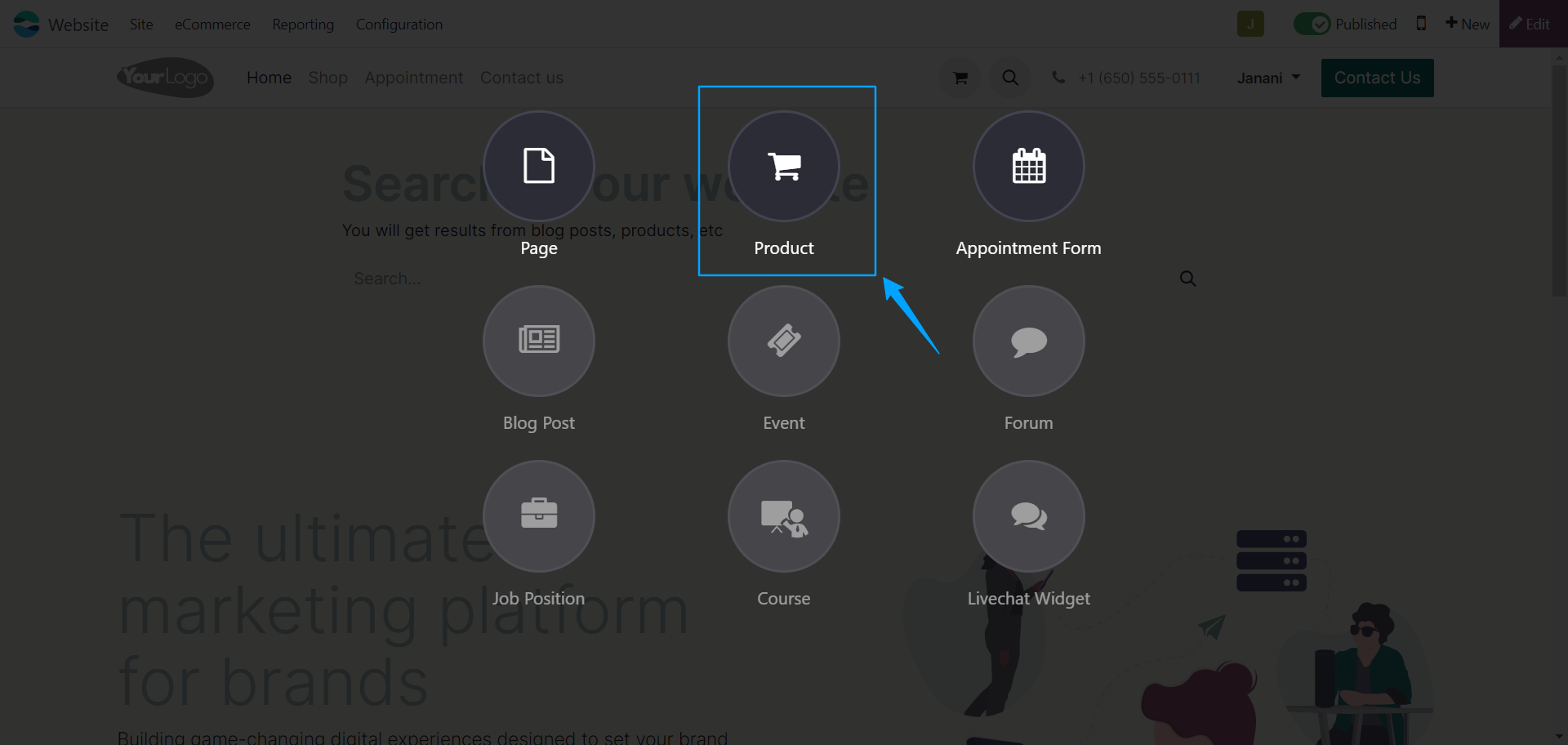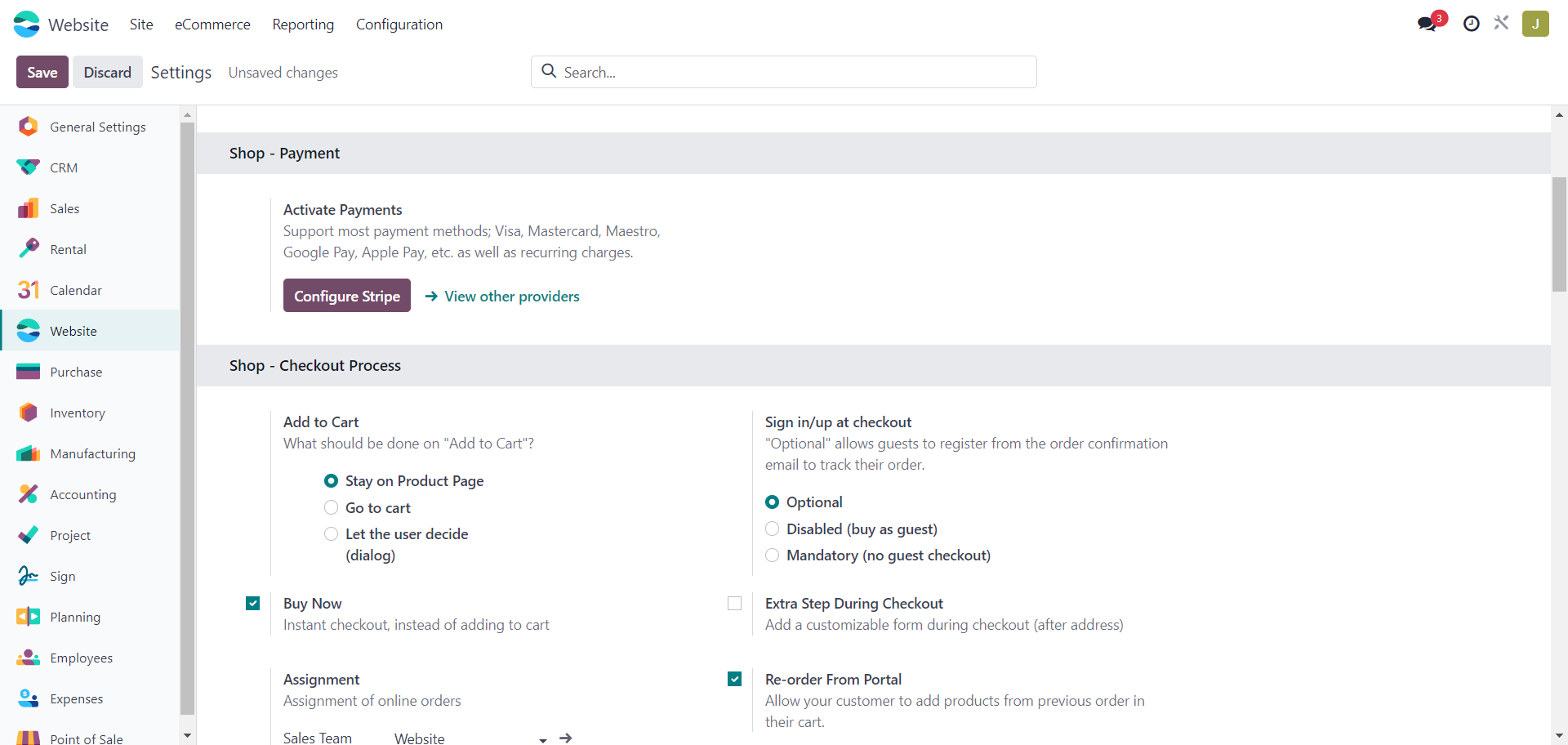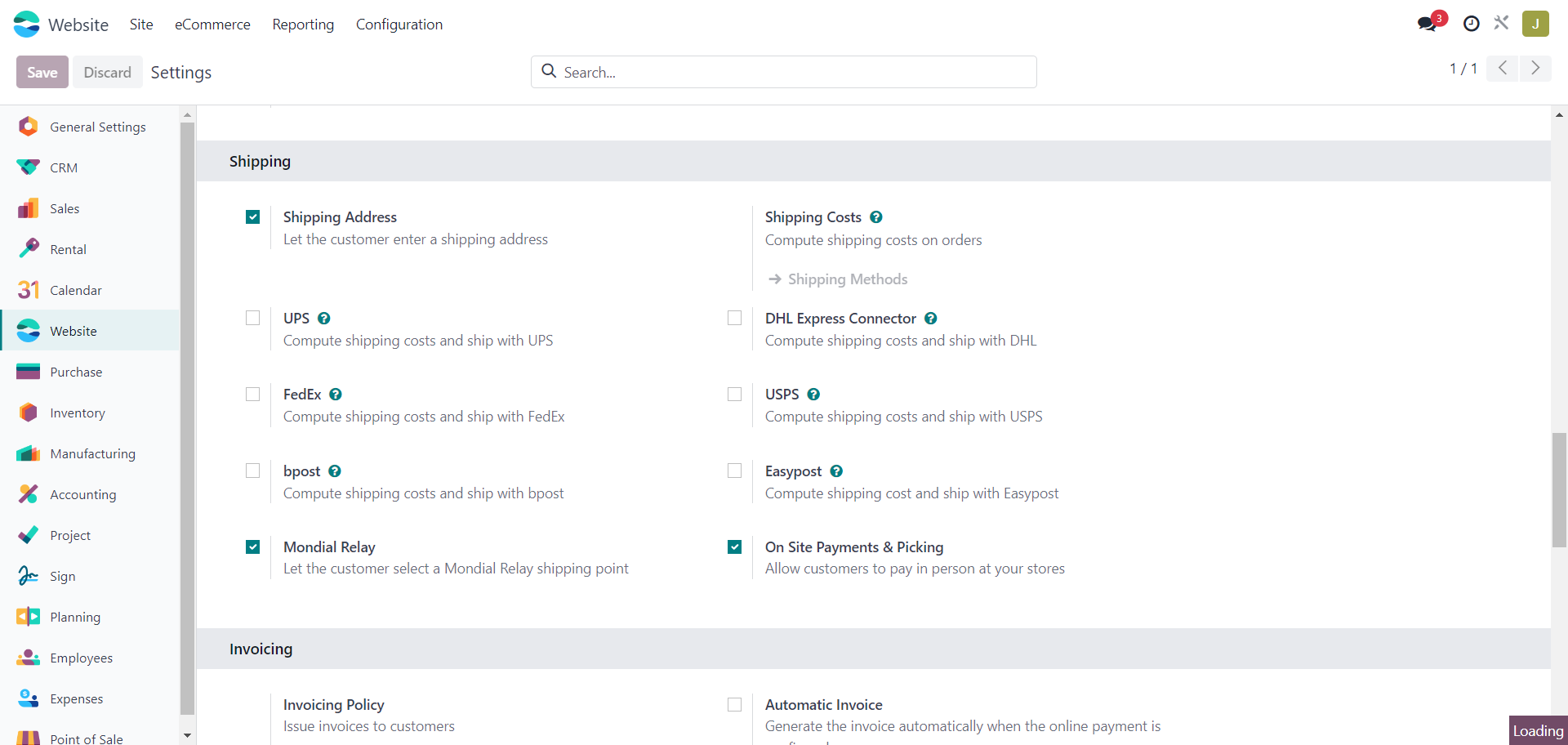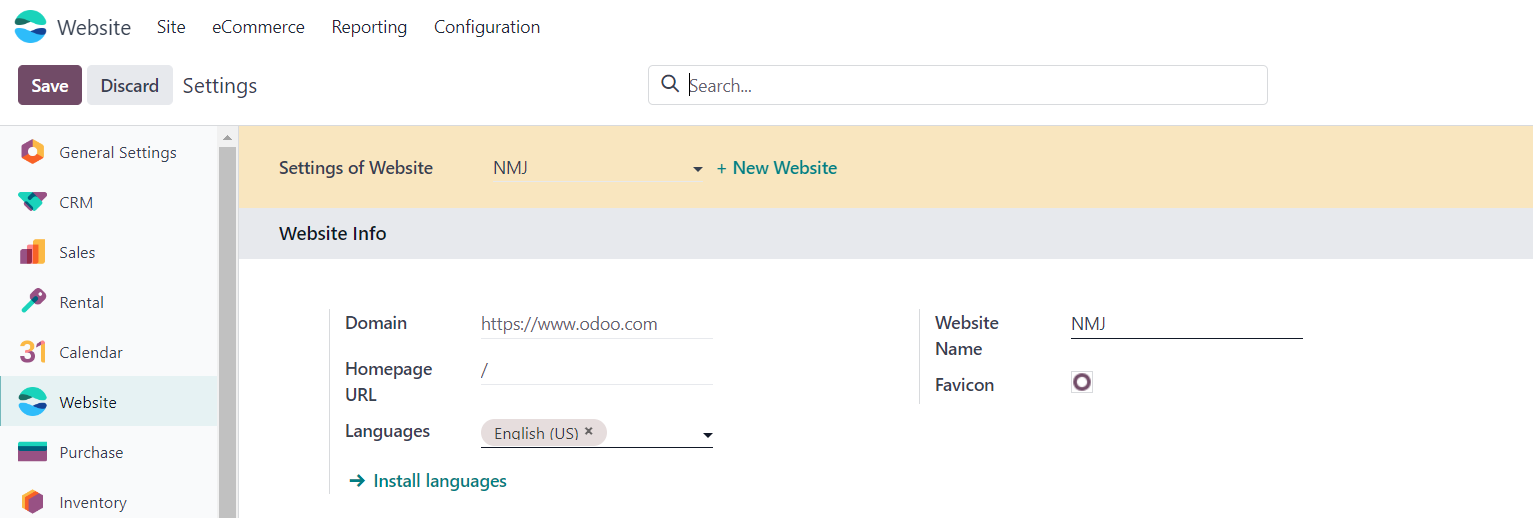Launching your business into the global e-commerce market is exciting, but it can be challenging. If you're unsure where and how to start, this guide is here to help. We'll take you through each step using Odoo ERP for the e-commerce business. Odoo ERP is a tool that combines various business functions in one place. Using Odoo in e-commerce integration ensures a seamless flow of information across different departments, reducing the need for multiple disconnected systems. It would be beneficial for your future business needs.
Why Odoo in Your Ecommerce Journey?
Before we delve into the details, let's discuss why Odoo ERP is a fitting option for this demonstration. Odoo ERP is more than just an e-commerce platform. Odoo mainly focuses on making business work simple. In addition to this, Odoo is available in both the Free and Paid versions. The free version encompasses essential features, while the paid Odoo Enterprise version offers advanced functionalities for more sophisticated business needs. Before selecting a version, businesses should compare features and understand the distinctions between Odoo Community and Enterprise.
Addressing Initial Challenges
We need to set up our environment to create an e-commerce website. So the foremost thing is to install the configured Odoo in the local environment.
Install and Configure Odoo:
The initial step involves installing and configuring Odoo in your local environment. Before starting, ensure that your local system meets the prerequisites specified by Odoo, including Python, PostgreSQL, and other dependencies.
Activate the Ecommerce Module:

Clicking a product on a new website creation will activate the e-commerce module. And create the trending e-commerce website using an inbuilt CMS panel. First, configure the general settings, such as the company logo, website name, and social media links.
Customize Your Store:

It is the simple T-shirt sales on the website, without any customization. But user can manage and update their e-commerce website as per their expectation.
Exploring Odoo module for E-commerce business:
Gaining proficiency in modules like Inventory, Purchase, Sales, and Accounting within Odoo proves beneficial for effectively managing and tracking product stock in the E-commerce domain. In terms of, product presentation, users can categorize products based on various attributes and create multiple variants within each category, enhancing organization and user experience. This holistic understanding of Odoo's interconnected functionalities is pivotal for optimizing E-commerce operations and aligning them with broader business objectives, offering businesses a streamlined and efficient approach to online retail.
Checkout and shipment:

The next crucial step in your E-commerce setup involves activating payment methods, whether utilizing Odoo's default options or integrating popular gateways. Following this, configure the checkout process to align with your preferences and those of your customers.

Diversifying your E-commerce offerings involves creating new shipping methods tailored to meet the diverse needs of your customers. Whether you're implementing free shipping or providing multiple shipping choices, this step aims to enhance the overall customer experience. Customers can now select shipping options based on their preferences. Additionally, leverage the inbuilt CMS panel to refine the frontend appearance, improving the overall look and feel of your E-commerce platform.
Optimize for SEO:
Boost the visibility of your E-commerce site by optimizing it for search engines. Navigate to "Website" > "SEO" and configure relevant settings. This step is essential for enhancing your site's search engine rankings, attracting organic traffic, and reaching a broader audience.
Your E-commerce Site is Ready:
Before making your website visible to the public, take advantage of the preview option. Ensure that the design, layout, and product displays meet your satisfaction. And then perform thorough testing of the checkout process. This includes testing various payment methods and validating shipping calculations. Conducting test transactions helps identify and address any potential issues before your site goes live.
Second most challenges
After setting up the website, you need to make your domain visible to users by setting up your domain, and you also need to manage the database.
1.Setting Your Domain Visible:
Configuring a domain name for your Odoo instance involves setting up DNS records to point to the server where Odoo is hosted and updating Odoo's configuration. Here's a step-by-step guide:
Set up your Domain Registration:
- Select the domain from popular domain register platforms, including GoDaddy, Namecheap, Google Domains, and others.
- Access the website of your chosen domain register and log in to your account
- Locate the DNS management systems or DNS settings section on your registrar's dashboard.(DNS serves as a directory for the internet by mapping domain names to their corresponding IP addresses, which are unique numerical identifiers assigned to each device connected to a network.)
- Create a domain name that maps to the IP address of the server where your Odoo instance is hosted. You may create both domain and subdomain
Set up Your Domain in Odoo:

- Navigate to "Settings">"General settings" after logging into your Odoo account.
- Set the "Base URL" in the domain, including protocol(e.g.,https://example.com).
- Save changes and Restart the Odoo.
- Install an SSL certificate to secure your HTTPS connections. Many certificate authorities provide free SSL certificates (e.g., Let's Encrypt).
- If you have installed the SSL certificate, then Update the Odoo Configuration to use HTTPS by setting proxy connection True in the respective Odoo configuration file.
- Restart your Odoo service, and then test your visibility of a website on a different web browser.
2.Set up your Database settings:
You can use either a database in Odoo or any other cloud platform (like Amazon Web Services(AWS), Azure and some more) to manage your Odoo database. In Odoo there is an option to manage databases like creating new, and backup databases in Odoo. With databases managed, and payment methods activated, your Odoo E-commerce platform is ready for a successful launch. The scalability of the platform, whether on-premise or in the cloud, ensures an efficient online shopping experience.
Conclusion
Odoo E-commerce offers a versatile and user-friendly platform to establish an online presence. The system provides a range of benefits, including customizable website designs, straightforward product management, and a seamless checkout process. With integrated inventory, sales, and accounting modules, businesses can efficiently track stock, manage multiple product variants, and implement flexible pricing strategies.
Nowadays, there is heavy competition in the market, therefore make use of Odoo CRM and Marketing automation tools to stand up in the market. Personalize and sell the product as per your customer's wish. If you need any further help, our certified consultants are here to create your E-commerce platform with a minimum amount of time.